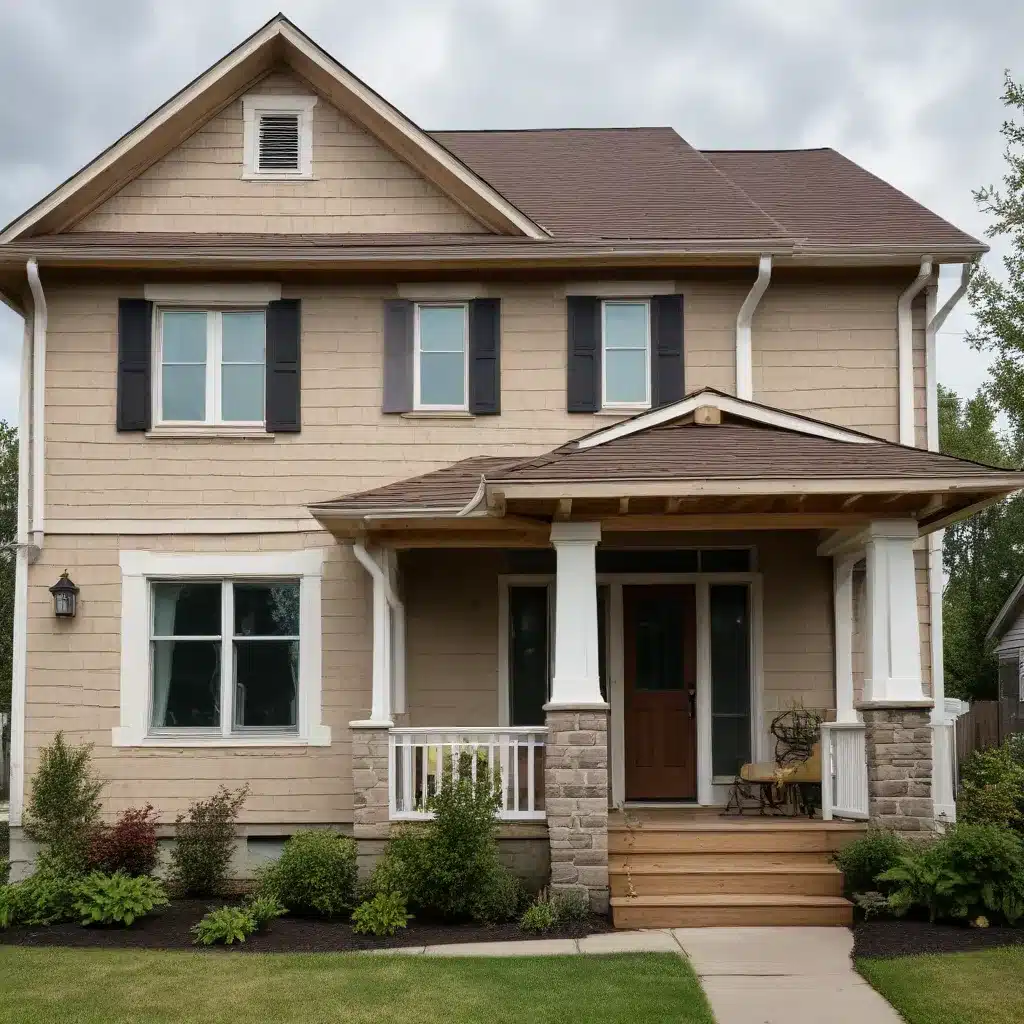
Safeguarding Your Property: Essential Exterior Preparedness
As a seasoned construction professional and interior designer, I understand the importance of protecting your home’s exterior from the devastating effects of natural disasters. Whether it’s hurricanes, floods, or severe storms, the safety and resilience of your property should be a top priority. In this comprehensive guide, I’ll share practical tips, expert insights, and sustainable strategies to help you weatherproof your home and minimize the impact of natural calamities.
Protecting Your Personal Documents and Valuables
Before delving into the details of home protection, let’s address the crucial task of safeguarding your personal documents and cherished possessions. In the event of a disaster, having your important papers, photographs, and sentimental items secured can provide peace of mind and streamline the recovery process.
Start by creating a disaster emergency kit that includes copies of your identification, insurance policies, financial records, and any other vital documents. Store these items in a waterproof, fireproof container or safe, and consider digitizing them for additional protection. Additionally, take the time to identify and gather any irreplaceable personal belongings, such as family heirlooms or prized collections, and ensure they are stored safely.
Fortifying Your Home’s Exterior
Now, let’s delve into the core of this article – safeguarding your home’s exterior from natural disasters. By implementing a comprehensive approach, you can significantly enhance the resilience of your property and minimize the risk of extensive damage.
Doors and Windows
One of the critical areas to address is the protection of your doors and windows. These vulnerable entry points can be the primary source of water and wind infiltration during severe weather events. Consider upgrading to impact-resistant windows and reinforcing your doors with sturdy deadbolts and weather-stripping. For added protection, install storm shutters or impact-resistant coverings that can be quickly deployed when a storm approaches.
Roofing
The roof is the first line of defense against the elements, so ensuring its integrity is crucial. Inspect your roof regularly, paying close attention to the condition of shingles, tiles, or metal panels. Consider upgrading to impact-resistant roofing materials, such as reinforced asphalt shingles or metal roofing, which can better withstand high winds and flying debris.
Landscaping
The vegetation surrounding your home can also play a vital role in mitigating the effects of natural disasters. Strategically plan your landscaping by selecting trees and shrubs that are resilient to high winds and heavy rain. Avoid planting tall, brittle trees near your home, and prioritize native species that are better adapted to the local climate. Additionally, regularly maintain your landscaping by trimming overhanging branches and clearing debris to minimize the risk of damage.
Flood Protection
Flooding can be a devastating consequence of natural disasters, and it’s essential to take proactive measures to protect your home. Begin by evaluating the flood risk in your area and consider investing in flood insurance, as standard homeowner’s policies typically do not cover flood damage. Additionally, explore options for elevating your home or installing backflow preventers and sump pumps to mitigate the impact of floodwaters.
Developing a Family Evacuation Plan
While fortifying your home’s exterior is crucial, it’s equally important to have a well-rehearsed family evacuation plan in place. Discuss and practice your emergency procedures with your loved ones, ensuring everyone knows the designated meeting location, evacuation routes, and the importance of staying informed through reliable sources, such as local authorities and emergency management agencies.
Sustainable Practices for Resilience
As you work to protect your home’s exterior, consider incorporating sustainable building practices and materials. Not only do these approaches enhance the long-term resilience of your property, but they also contribute to environmental responsibility and cost savings over time.
For example, explore the use of energy-efficient windows and doors, which can better withstand the impact of natural disasters while also reducing your home’s energy consumption. Similarly, consider installing a metal or impact-resistant roofing system, which not only provides superior protection but also has a longer lifespan and requires less maintenance than traditional asphalt shingles.
Partnering with Professionals
While many of the exterior protection strategies can be implemented by homeowners, it’s always advisable to consult with experienced construction professionals and interior designers. These experts can provide valuable insights, recommend the most suitable products and techniques, and ensure that your home’s exterior is fortified to the highest standards.
At Local Builder London, our team of seasoned construction specialists and interior designers are well-versed in delivering comprehensive solutions for weatherproofing and disaster preparedness. We can work closely with you to assess your home’s unique needs, develop a tailored action plan, and oversee the implementation of reliable, sustainable exterior protection measures.
Conclusion
Weathering the storm and protecting your home’s exterior from natural disasters is a multifaceted endeavor that requires careful planning, proactive measures, and a commitment to long-term resilience. By following the practical tips and expert insights outlined in this article, you can safeguard your property, your valuables, and your family’s well-being, ensuring your home is better equipped to withstand the unpredictable forces of nature.
Remember, the key to weathering the storm lies in a comprehensive approach that addresses both the immediate and long-term needs of your home’s exterior. Partner with experienced professionals, explore sustainable solutions, and never underestimate the importance of preparedness. Together, we can work towards a future where your home remains a secure, resilient haven, no matter what Mother Nature has in store.


